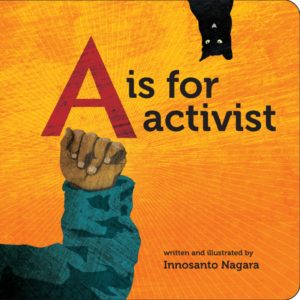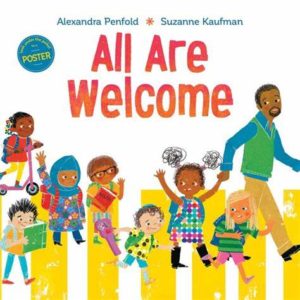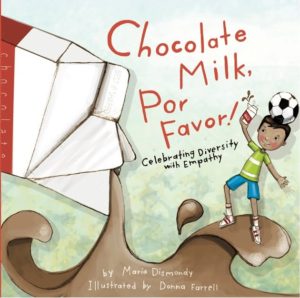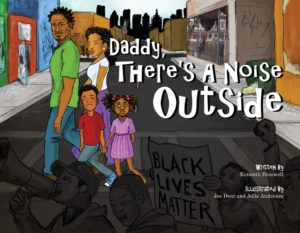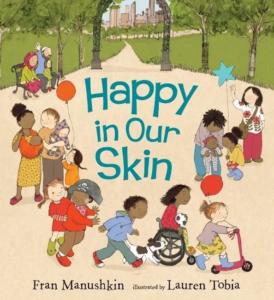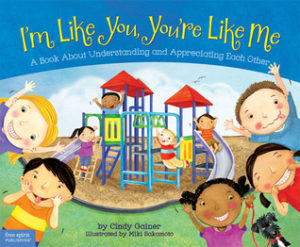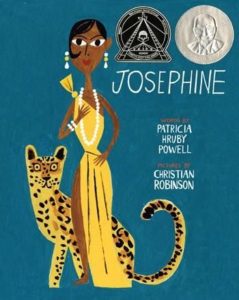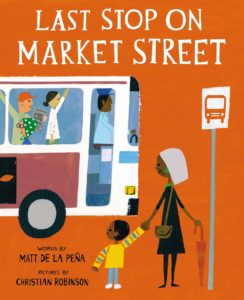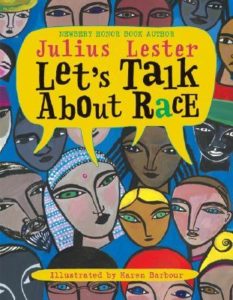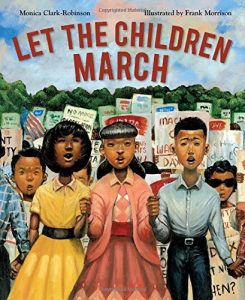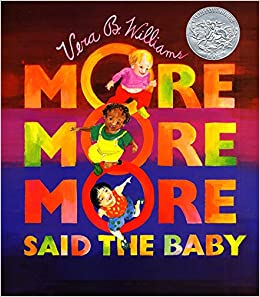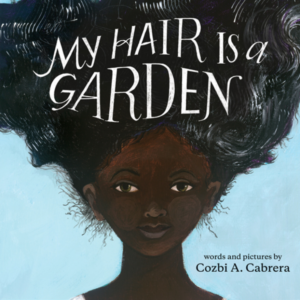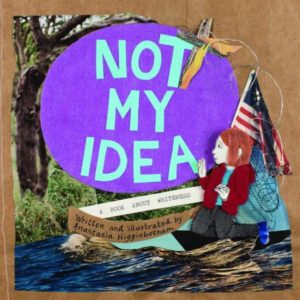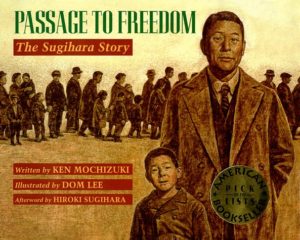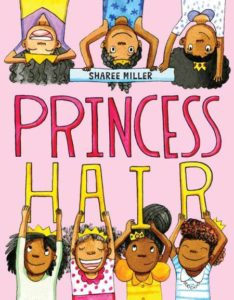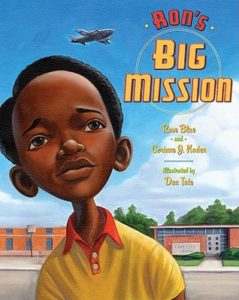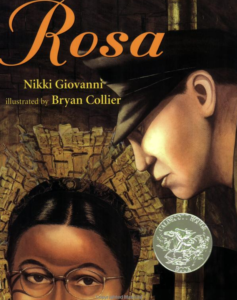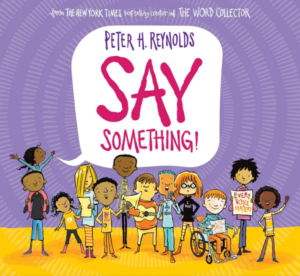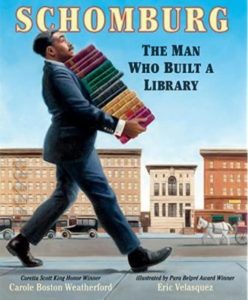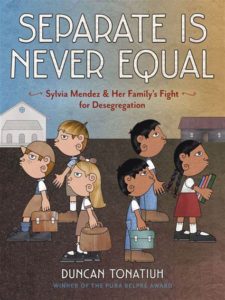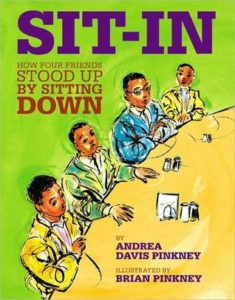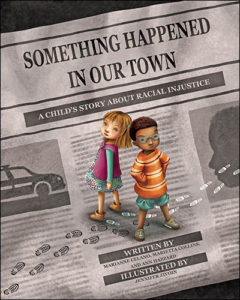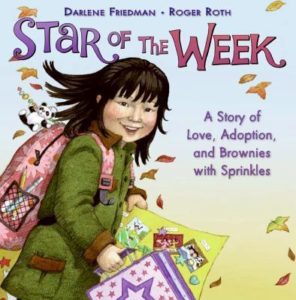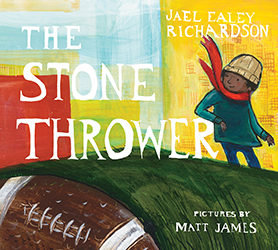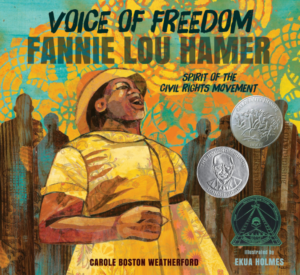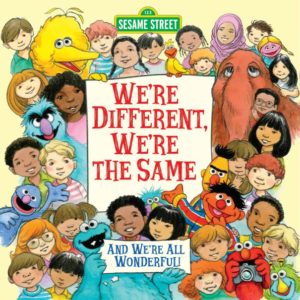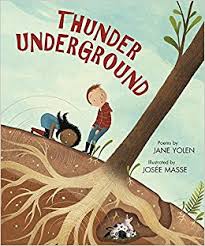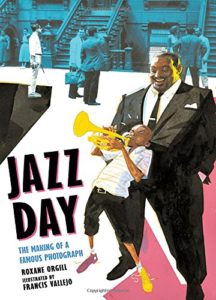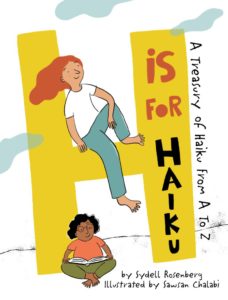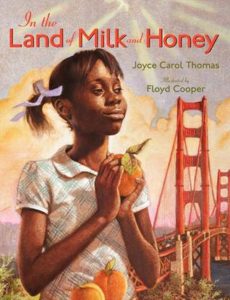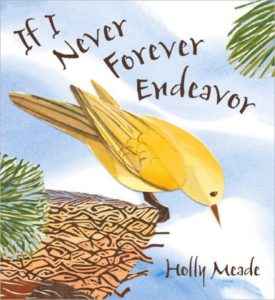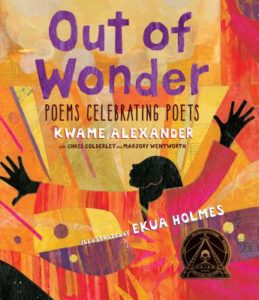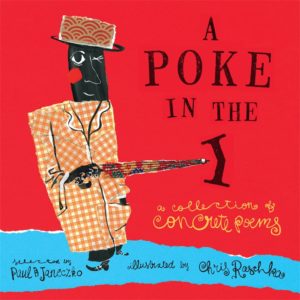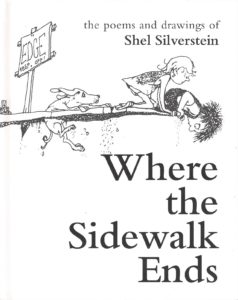For some time now, I’ve been building a list of books to support anti-racism conversations. My intention was to publish it on OPB later this year, but given all that’s gone in the world recently, there’s no better time to finish this list and share it widely so that people are aware of quality picture-book resources to help facilitate important, necessary conversations with young readers.
In my mind, this is one of the best ways to work toward creating long-term generational change.
Frequent OPB guests, friends, and fans might note that most Picture Book Lists found on this site are 10 items long. With no apologies, this list will have far more selections to ensure you can find enough quality texts to suit your needs.
A Is for Activist by Innosanto Nagara (Nov 2013)
From Goodreads: “A is for Activist is an ABC board book for the next generation of progressives: Families that want their kids to grow up in a space that is unapologetic about activism, environmental justice, civil rights, LGBTQ rights, and so on.”
AGES 3–7
All Are Welcome by Alexandra Penfold, illustrated by Suzanne Kaufman (July 2018)
From Goodreads: “Follow a group of children through a day in their school, where everyone is welcomed with open arms. A school where kids in patkas, hijabs, and yamulkes play side-by-side with friends in baseball caps. A school where students grow and learn from each other’s traditions and the whole community gathers to celebrate the Lunar New Year.
All Are Welcome lets young children know that no matter what, they have a place, they have a space, they are welcome in their school.”
AGES 4–8
Chocolate Milk, Por Favor: Celebrating Diversity with Empathy by Maria Dismondy, illustrated by Donna Farrell (April 2015)
From Goodreads: “Johnny is a big fan of school but that all changes when the new kid, Gabe arrives. Gabe doesn’t speak any English, and that doesn’t stop Johnny from going out of his way to be unkind.
But what will Johnny do when Gabe starts to make new friends? Will he join in the fun of making a new friend or turn the other way?
Johnny discovers a powerful message in this student differences are celebrated. Read to find out how chocolate milk plays a major role in the discovery of the real universal language.”
AGES 4–11
Daddy, There’s a Noise Outside by Kenneth Braswell, illustrated by Joe Dent and Julie Anderson (December 2015)
From Goodreads: “This engaging story begins when two children are awakened by noises in the middle of the night outside the window of their inner-city neighborhood. Both their dad and mom spend the next morning explaining to them what was taking place in their community.”
AGES 4–8
Happy in Our Skin by Fran Manushkin, illustrated by Lauren Tobia (March 2018)
From Goodreads:
“Look at you!
You look so cute
in your brand-new birthday suit.
Just savor these bouquets of babies—cocoa-brown, cinnamon, peaches and cream. As they grow, their clever skin does too, enjoying hugs and tickles, protecting them inside and out, and making them one of a kind. Fran Manushkin’s rollicking text and Lauren Tobia’s delicious illustrations paint a breezy and irresistible picture of the human family—and how wonderful it is to be just who you are.”
AGES 4–6
I’m Like You, You’re Like Me: A Book About Understanding and Appreciating Each Other by Cindy Gainer, illustrated by Miki Sakamoto (February 2013)
From Goodreads: “ ‘It’s fun to find ways I’m like you and you’re like me. It’s fun to find ways we’re different.’ In this colorful, inviting book, kids from preschool to lower elementary learn about diversity in terms they can understand: hair that’s straight or curly, families with many people or few, bodies that are big or small. With its wide-ranging examples and fun, highly detailed art, I’m Like You, You’re Like Me helps kids appreciate the ways they are alike and affirm their individual differences. A two-page adult section in the back provides tips and activities for parents and caregivers to reinforce the themes and lessons of the book.
AGES 3–8
Josephine: The Dazzling Life of Josephine Baker by Patricia Hruby Powell, illustrated by Christian Robinson (January 2014)
From Goodreads: “In exuberant verse and stirring pictures, Patricia Hruby Powell and Christian Robinson create an extraordinary portrait for young people of the passionate performer and civil rights advocate Josephine Baker, the woman who worked her way from the slums of St. Louis to the grandest stages in the world. Meticulously researched by both author and artist, Josephine’s powerful story of struggle and triumph is an inspiration and a spectacle, just like the legend herself.”
AGES 7–10
Last Stop on Market Street by Matt de La Peña, illustrated by Christian Robinson (January 2015)
From Goodreads: “Every Sunday after church, CJ and his grandma ride the bus across town. But today, CJ wonders why they don’t own a car like his friend Colby. Why doesn’t he have an iPod like the boys on the bus? How come they always have to get off in the dirty part of town? Each question is met with an encouraging answer from grandma, who helps him see the beauty—and fun—in their routine and the world around them.”
AGES 3–5
Let’s Talk About Race by Julius Lester, illustrated by Karen Barbour (December 2008)
From Goodreads: “Julius Lester says, “I write because our lives are stories. If enough of those stories are told, then perhaps we will begin to see that our lives are the same story. The differences are merely in the details.” Now Mr. Lester shares his own story as he explores what makes each of us special. Karen Barbour’s dramatic, vibrant paintings speak to the heart of Lester’s unique vision, truly a celebration of all of us.”
AGES 4–8
Let the Children March by Marcia Clark-Robinson, illustrated by Frank Morrison (January 2018)
From Goodreads: “In 1963 Birmingham, Alabama, thousands of African American children volunteered to march for their civil rights after hearing Dr. Martin Luther King Jr. speak. They protested the laws that kept black people separate from white people. Facing fear, hate, and danger, these children used their voices to change the world.”
AGES 6–9
“More More More” Said the Baby by Vera B. Williams (September 1997)
From Goodreads: “From beneath the tickles, kisses, and unfettered affection showered on them by grownups, the children in Vera B. Williams’ Caldecott Honor Book cry out for more more more! The stars of three little love stories — toddlers with nicknames like “Little Pumpkin” — run giggling until they are scooped up by adoring adults to be swung around, kissed, and finally tucked into bed.
Quirky watercolor drawings and colorful text feature multiethnic families, and young readers will rejoice in seeing the center of all the attention: the wiggly, chubby, irresistible toddlers.”
AGES 1–7
My Hair Is a Garden by Cozbi A. Cabrera (April 2018)
From Goodreads: “After a day of being taunted by classmates about her unruly hair, Mackenzie can’t take any more. On her way home from school, she seeks the guidance of her wise and comforting neighbor, Miss Tillie. Using the beautiful garden in her backyard as a metaphor, Miss Tillie shows Mackenzie that maintaining healthy hair is not a chore nor is it something to fear. But most importantly, Mackenzie learns that natural black hair is beautiful.”
AGES 5–7
Not My Idea: A Book About Whiteness by Anastasia Higginbotham (September 2018)
From Goodreads: “A white child sees TV news coverage of a white police officer shooting a brown person whose hands were up. Upset, he asks his mother why; she deflects, assuring him that he is safe. Later, they visit an aunt and uncle, where the TV, always on, shows a rally in response to the police shooting. The child glimpses a moving press conference with the victim’s family while his aunt claims she simply ‘can’t watch the news.’
The book’s narrator accompanies the child as he faces history and himself. The activities section urges kids to grow justice (‘like a bean sprout in a milk carton’) inside of themselves, seek out and listen to the truth about racism and white supremacy, and prepare to be changed, heartbroken, and liberated by this experience.
Part history lesson, part compassionate primer to assist children (and parents) past defensiveness, Not My Idea is a tangible tool for necessary conversations.”
AGES 8–12
Passage to Freedom: The Sugihara Story by Ken Mochizuki, illustrated by Dom Lee (July 2010)
From Goodreads: “In 1940, five-year-old Hiroki Sugihara, the eldest son of the Japanese consul to Lithuania, saw from the consulate window hundreds of Jewish refugees from Poland. They had come to Hiroki’s father with a desperate request: Could consul Sugihara write visas for them to escape the Nazi threat?
The Japanese government denied Sugihara’s repeated requests to issue the visas. Unable to ignore the plight of the refugees, he turned to his family. Together they made the crucial decision that saved thousands of lives.
Passage to Freedom, based on Hiroki Sugihara’s own words, is one of the most important stories to emerge from the ruins of the Holocaust. It is the story of one man’s remarkable courage, and the respect between a father and a son who shared the weight of witness and an amazing act of humanity.”
AGES 6–11
Princess Hair by Sharee Miller (November 2018)
From Goodreads: “All Princesses wear crowns but the don’t all wear their hair the same way underneath. They wear Braids, Blowouts, Afros and Twists! And every Princess loves her Princess Hair!”
AGES 4–8
Ron’s Big Mission by Rose Blue and Corinne J. Naden, illustrated by Don Tate (January 2009)
From Goodreads: “Nine-year-old Ron loves going to the Lake City Public Library to look through all the books on airplanes and flight. Today, Ron is ready to take out books by ‘himself.’ But in the segregated world of South Carolina in the 1950s, Ron’s obtaining his own library card is not just a small rite of passage–it is a young man’s first courageous mission. Here is an inspiring story, based on Ron McNair’s life, of how a little boy, future scientist, and Challenger astronaut desegregated his library through peaceful resistance.”
AGES 6–8
Rosa by Nikki Giovanni, illustrated by Bryan Collier (December 2007)
From Goodreads: “She had not sought this moment but she was ready for it. When the policeman bent down to ask ‘Auntie, are you going to move?’ all the strength of all the people through all those many years joined in her. She said, ‘No.’
A picture book account of Rosa Park’s historic choice.”
AGES 4–8
Say Something! by Peter H. Reynolds (February 2019)
From Goodreads: “In this empowering new picture book, beloved author Peter H. Reynolds explores the many ways that a single voice can make a difference. Each of us, each and every day, have the chance to say something: with our actions, our words, and our voices. Perfect for kid activists everywhere, this timely story reminds readers of the undeniable importance and power of their voice. There are so many ways to tell the world who you are…what you are thinking…and what you believe. And how you’ll make it better. The time is now: SAY SOMETHING!”
AGES 4–8
Schomburg: The Man Who Built a Library by Carole Boston Weatherford, illustrated by Eric Velásquez (August 2019)
From Goodreads: “Amid the scholars, poets, authors, and artists of the Harlem Renaissance stood an Afro-Puerto Rican man named Arturo Schomburg. His life’s passion was to collect books, letters, music, and art from Africa and the African diaspora in order to bring to light the achievements of people of African descent. When his collection became so large that it threatened to overflow his house, he turned to the New York Public Library.
At the time, the collection, with Schomburg as curator, was the cornerstone of a new Division of Negro History, Literature and Prints. A century later, it is the Schomburg Center for Research in Black Culture—and a beacon for scholars all over the world.
In luminous paintings and arresting poems, two of children’s literature’s foremost African-American scholars track the journey of Arturo Schomburg and his quest to correct and expand the historical record for generations to come.”
AGES 8–12
Separate Is Never Equal: Sylvia Méndez and Her Family’s Fight for Desegregation by Duncan Tonatiuh (May 2014)
From Goodreads: “Almost 10 years before Brown vs. Board of Education, Sylvia Méndez and her parents helped end school segregation in California. An American citizen of Mexican and Puerto Rican heritage who spoke and wrote perfect English, Méndez was denied enrollment to a ‘Whites only’ school. Her parents took action by organizing the Hispanic community and filing a lawsuit in federal district court. Their success eventually brought an end to the era of segregated education in California.”
AGES 6–9
Sit-In: How Four Friends Stood Up By Sitting Down by Andrea Davis Pinkney, illustrated by Brian Pinkney (February 2010)
From Goodreads: ”
It was February 1, 1960.
They didn’t need menus. Their order was simple.
A doughnut and coffee, with cream on the side.
This picture book is a celebration of the 50th anniversary of the momentous Woolworth’s lunch counter sit-in, when four college students staged a peaceful protest that became a defining moment in the struggle for racial equality and the growing civil rights movement.
Andrea Davis Pinkney uses poetic, powerful prose to tell the story of these four young men, who followed Dr. Martin Luther King Jr.‘s words of peaceful protest and dared to sit at the ‘whites only’ Woolworth’s lunch counter. Brian Pinkney embraces a new artistic style, creating expressive paintings filled with emotion that mirror the hope, strength, and determination that fueled the dreams of not only these four young men, but also countless others.”
AGES 6–10
Something Happened in Our Town: A Child’s Story About Racial Injustice by Marianne Celano, Marietta Collins, and Ann Hazzard, illustrated by Jennifer Zivoin (April 2018)
From Goodreads: “Something Happened in Our Town follows two families — one White, one Black — as they discuss a police shooting of a Black man in their community. The story aims to answer children’s questions about such traumatic events, and to help children identify and counter racial injustice in their own lives.
Includes an extensive Note to Parents and Caregivers with guidelines for discussing race and racism with children, child-friendly definitions, and sample dialogues. Free, downloadable educator materials (including discussion questions) are available at www.apa.org.”
AGES 4–8
Star of the Week: A Story of Love, Adoption, and Brownies with Sprinkles by Darlene Friedman, illustrated by Roger Roth (January 2009)
From Goodreads: “It’s Cassidy—Li’s turn to be Star of the Week at school! So she’s making brownies and collecting photos for her poster. She has pictures of all the important people in her life—with one big exception. Cassidy—Li, adopted from China when she was a baby, doesn’t have a photo of her birthparents. But with a little help from her family, she comes up with the perfect way to include them!
Using their own family’s story as a model, Darlene Friedman and Roger Roth celebrate the love of families everywhere through this straightforward and insightful book.”
AGES 5–8
The Stone Thrower by Jael Ealey Richardson, illustrated by Matt James (May 2016)
From Goodreads: “The African-American football player Chuck Ealey grew up in a segregated neighborhood of Portsmouth, Ohio. Against all odds, he became an incredible quarterback. But despite his unbeaten record in high school and university, he would never play professional football in the United States.
Chuck Ealey grew up poor in a racially segregated community that was divided from the rest of town by a set of train tracks, but his mother assured him that he wouldn’t stay in Portsmouth forever. Education was the way out, and a football scholarship was the way to pay for that education. So despite the racist taunts he faced at all the games he played in high school, Chuck maintained a remarkable level of dedication and determination. And when discrimination followed him to university and beyond, Chuck Ealey remained undefeated.
This inspirational story is told by Chuck Ealey’s daughter, author and educator Jael Richardson, with striking and powerful illustrations by award-winning illustrator Matt James.”
AGES 5–6
Voice of Freedom: Fannie Lou Hamer: The Spirit of the Civil Rights Movement by Carole Boston Weatherford, illustrated by Ekua Holmes (December 2018)
From Goodreads: “A stirring collection of poems and spirituals, accompanied by stunning collage illustrations, recollects the life of Fannie Lou Hamer, a champion of equal voting rights.
‘I am sick and tired of being sick and tired.’
Despite fierce prejudice and abuse, even being beaten to within an inch of her life, Fannie Lou Hamer was a champion of civil rights from the 1950s until her death in 1977. Integral to the Freedom Summer of 1964, Ms. Hamer gave a speech at the Democratic National Convention that, despite President Johnson’s interference, aired on national TV news and spurred the nation to support the Freedom Democrats. Featuring luminous mixed-media art both vibrant and full of intricate detail, Singing for Freedom celebrates Fannie Lou Hamer’s life and legacy with an inspiring message of hope, determination, and strength.”
AGES 10 & up
We’re Different, We’re the Same by Bobbi Jane Kates, illustrated by Joe Mathieu (October 1992)
From Goodreads: “Who better than Sesame Street to teach us that we may all look different on the outside–but it’s important to remember that deep down, we are all very much alike. We all have the same needs, desires, and feelings. Elmo and his Sesame Street friends help teach toddlers and the adults in their lives that everyone is the same on the inside, and it’s our differences that make this wonderful world, which is home to us all, an interesting–and special–place. This enduring, colorful, and charmingly illustrated book offers an easy, enjoyable way to learn about differences–and what truly matters. It is an engaging read for toddlers and adults alike.”
AGES 3–7


